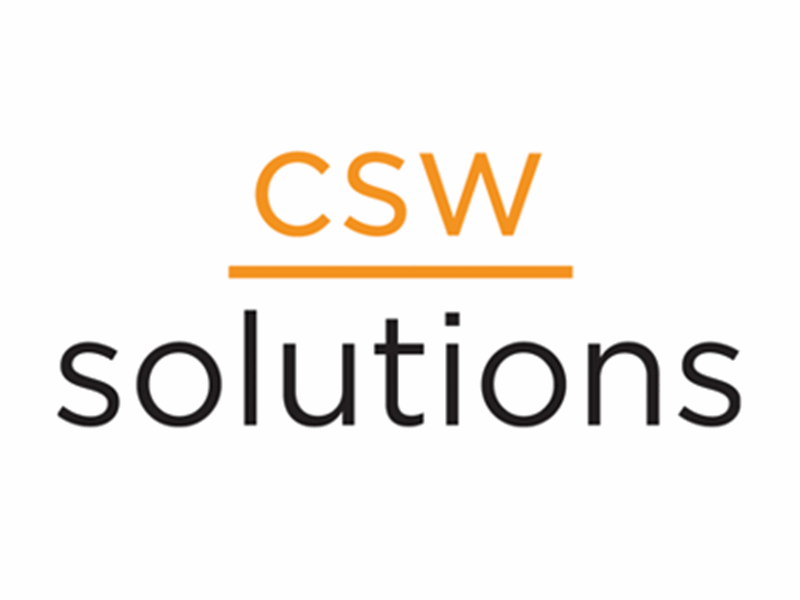For more information on your charming neighborhood CSW Solutions, visit us at our home or subscribe to our newsletter! We also do that social networking thing at: Twitter, Facebook, Linkedin, and Instagram! Check out our #funfactfridays
Software Discovery: 5 Steps for Success with your Project
Software discovery is essential for businesses to keep up with the ever-evolving technology, boost their productivity and create a competitive advantage over other competitors. It can be an overwhelming process, but with the right approach and tools, it can bring amazing results. Any business project, successful or not, depends heavily on having the right software tools in place to help achieve project outcomes. It is important to take the right steps when it comes to software discovery to ensure that your project is successful. In this post, we will discuss the five steps for succeeding at your software discovery project and give you some advice on how to get the most out of it.
What is Software Discovery?
Software discovery is the process of identifying, evaluating, and selecting software applications for a business or organization. This process involves researching available software options, testing out different solutions, and choosing the application that best meets the needs of the organization. Software discovery can be a complex and time-consuming process, and it requires careful consideration of factors such as cost, compatibility, and security. Additionally, the software discovery process should involve feedback from stakeholders and users to ensure that the right solution is chosen. Once the appropriate software is identified, it can be implemented with minimal disruption to the organization's operations.
Goals of Software Discovery
The goals of software discovery are to identify the best software solutions in terms of cost, quality, and usability that meet the needs of the organization or individual. In order to achieve these goals, software discovery requires the collection and analysis of data from a variety of sources. This may include research on the latest trends in software development, customer feedback, and reviews from industry experts. Once the data has been analyzed, it can be used to identify the best software solutions available and compare them in terms of cost, quality, and usability. By taking the time to identify and evaluate the best software solutions, organizations and individuals can ensure they are making informed decisions when selecting and implementing software.
It is important to remember that software discovery is an ongoing process. Organizations should regularly review their software to make sure it still meets their needs and is up to date with the latest advances in technology. Additionally, software should be evaluated on an ongoing basis to ensure it continues to meet the goals of the organization.

Software Discovery Components
The software discovery process is the process of researching, evaluating, and selecting software solutions to meet business needs. The components that we will cover of the software discovery process include:
- Identifying Your Software Requirements: Identifying and documenting the needs of the business and the problems that need to be solved.
- Researching and Evaluating Solutions: Researching and evaluating different software solutions to determine which ones best meet the business needs.
- Testing and Trialing Software Options: Deciding which software solutions are the best fit for the business and selecting them.
- Selecting and Implementing Solutions: Configuring the selected solutions and integrating them into the existing system.
- Assessing Security and Compliance: Security is important for protecting data and ensuring that unauthorized access is not possible. Compliance is necessary to ensure that the organization is meeting all applicable legal and industry standards.
Steps to Effective Software Discovery
1. Identifying Your Software Requirements
Identifying your software requirements is a crucial step in software discovery. This process helps to clarify the goals and objectives of the project and ensures that the right software is chosen to meet those needs. To begin, you should start by gathering information about the project, such as its purpose, timeline, budget, and any other relevant details. Once you have a clear understanding of the project, you can start to identify the specific features and functions that the software must have in order to meet your needs. It's also important to consider any potential obstacles or challenges that the software will need to address. Finally, consider whether any existing software could be adapted to meet the requirements rather than investing in a brand-new solution. By taking the time to thoroughly explore your options, you can ensure that you make an informed decision about the best software for your project.
2. Researching and Evaluating Solutions
Software discovery can be an overwhelming task, but with a few simple steps, you can quickly narrow down your options. The first step is to research and evaluate potential solutions. This includes reading reviews and customer testimonials to get a better understanding of how different software solutions perform in different scenarios. Once you have a good idea of the options available, you can start comparing feature sets to make sure the software has the features you need. After that, it's time to analyze pricing and licensing models to make sure the software fits within your budget. Finally, you can use this information to make an informed decision about which software is best for your needs. By taking the time to do your research, you can save yourself a lot of time, money and hassle in the long run.
3. Testing and Trialing Software Options
There are a number of methods you can use to test and trial software options. One way to do this is by taking advantage of free trials and demos to get a sense of how the software works before making a commitment. This can be especially useful for complex applications or those with many features. You could also consider pilot programs, which are short-term projects that allow you to test a piece of software in a live environment. And if the software is complex or unique, you may want to consider a proof of concept project, which involves building a working version of the software to demonstrate its potential. By taking the time to test and trial different software options, businesses can ensure that they make the best choice for their needs.
4. Selecting and Implementing Solutions
When it comes to selecting the best software solution for a business, there are several factors to consider. Cost, functionality, and ease of use are all important considerations. Cost is always important when deciding on a solution, but different solutions may offer tiers or price points with unique features. It is also important to consider how easy the software is to use, as this will affect how quickly it can be implemented and how efficiently it can be used. Additionally, they should make sure that the chosen software is compatible with their existing systems and will work in tandem with them. Finally, it is important to evaluate the long-term vendor support for the product, as this can be invaluable in ensuring the smooth operation of the software over time. This includes considering the vendor's reputation, customer service, and overall reliability. By taking into account these factors, businesses can be sure to select a software solution that meets their needs and provides long-term value.
5. Ensuring Security & Compliance During Software Development Discovery Phase
During the software development discovery phase, security and compliance should be assessed to ensure that the product meets all the necessary requirements. By regularly assessing these areas, organizations can ensure that their IT infrastructure is stable and up to date. This can involve a number of steps, such as carrying out an initial risk assessment, developing a security policy and conducting a code review.
First, the team should identify any security and compliance requirements that need to be met by the software they are developing. It is important to identify any potential risks and vulnerabilities early in the process, as this will help to prevent them from becoming costly problems later on. This includes requirements such as data encryption, two-factor authentication, or secure data storage. Next, the team should evaluate the security measures implemented by the software vendor. This could include reviewing their security protocols and policies, as well as checking for any certifications or third-party audits. It is also important to ensure that the software complies with any relevant regulations, such as data privacy laws. Finally, the team should develop best practices for implementing security and compliance measures. This could involve setting up a secure development lifecycle, implementing vulnerability scanning, and conducting regular security assessments. By taking these steps, the team can ensure that the software they develop is secure and compliant with all relevant regulations.

Conclusion and Ongoing Evaluation
In conclusion, software discovery is an essential part of the software development process. By discovering the needs and wants of users, developers can create software that is better suited to their needs and more likely to be successful. Through the use of interviews, surveys and other research methods, your software development team can learn about the user experience and build software that meets those needs. By understanding the user's goals and objectives, developers can create software that is easier to use and more intuitive. In addition, software discovery can help your software development team identify potential problems with the design and functionality of their product, allowing them to make improvements before the software is released. Ultimately, software discovery is an invaluable tool for businesses looking to create high-quality software products.
When it comes to software discovery, CSW Solutions can offer invaluable assistance. We can help you identify specific software needs by assessing the current software environment in terms of its capabilities, operations, and the performance of its solutions. Then, our comprehensive analysis can determine what new solutions would improve operations and provide additional value. Once the required solutions have been identified, we do the legwork to find the right software. This can be done through research and industry contacts, along with our team's expertise. We'll narrow down the options and recommend the most suitable solutions for the project. After the best solutions have been chosen, we will implement them.
CSW Solutions can provide support throughout the process, from installation to training, to ensure a successful deployment and follow-up with ongoing evaluations. Regularly monitoring and evaluating how well the solutions are meeting the business needs and making adjustments is just part of the promise of quality from a team you can trust. With our help, businesses can easily benefit from a software discovery with the highest chance of success.
